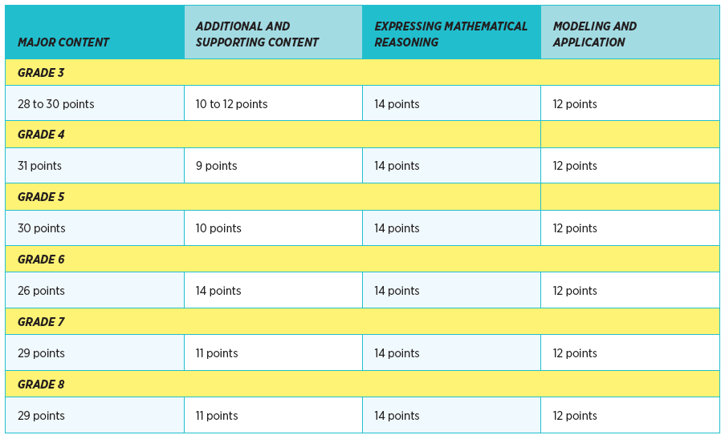March 16, 2017 other-test–taking-strategies
Trends in Standardized Test in Mathematics: What’s Important and How Is It Being Scored?
By: Jeff Todd
There has been a major upheaval in the standardized testing that students receive in math. The types of content that are being tested, the types of questions used to test them, computerized testing, and new and different ways of reporting the results all seem to be in a constant state of flux.
With the Common Core State Standards and their Standards for Math Practice now fully implemented in many states, we are starting to see some of the trends in how student test results are being reported.
Two consortia were founded that are developing the tests and test items that most of our students will experience. These consortia are called the Smarter Balanced Assessment Consortium (SBAC) and the Partnership for Assessment of Readiness for College and Careers (PARCC).
I am more familiar with the PARCC tests and items, and this post will focus on trends that we can see in their standardized tests. Nonetheless, whether your state uses PARCC or not, the Common Core State Standards for Mathematics lead in the direction of these trends.
FOUR CATEGORIES OF THE PARRC MATH TEST
One trend I see is the way that PARCC divides its test items into four categories (called subclaims in their literature): major content, additional and supporting content, expressing mathematical reasoning, and modeling/application.
The points breakdown in each of the categories is roughly 40% for major content, 20% for additional and supporting content, 20% for reasoning, and 20% for modeling.
The download associated with this post includes a list of the major, additional, and supporting content for each grade level, which I think you will find very useful as you try to understand how these assessments are structured.
MAJOR CONTENT
Major content is consider to be the substantial work for the grade level, for example, multiplication and division in Grade 3, or analyzing and solving linear equations in Grade 8. There are a few major content topics for each grade. Forty percent or more of the PARCC test points come from major content questions.
All major content questions are machine scorable and do not require written responses.
SUPPORTING & ADDITIONAL CONTENT
Additional and supporting content receives less focus, but is still an important part of the curriculum for students.
Supporting content allows students to practice skills and concepts they have learned from the major content, such as measurement, representing and interpreting data, and statistics. For instance, in Grade 4 students might practice their multiplication skills by changing feet to inches, or meters to centimeters.
Additional content includes topics that are important to the grade level, but not directly related to the major content. Often, geometry topics including surface area and volume are part of the additional content.
All additional and supporting content questions are machine scorable and do not require written responses.
EXPRESSING MATHEMATICAL REASONING
Expressing mathematical reasoning questions are opportunities to use the mathematical practices to demonstrate reasoning about major content topics.
Each PARCC test, at every grade level, has four questions related to expressing mathematical reasoning, two 3-point questions and two 4-point questions.
The questions can be machine scorable (multiple choice or technology enhanced), but always require a written response on at least one part of each question.
MODELING/APPLICATION
Modeling questions require students to answer multi-part questions related to real-world scenarios. Each PARCC test, at every grade, level has three modeling questions, two 3-point questions and one 6-point question. The content for modeling/application questions can come from any content in the Common Core State Standard from the current or previous grade levels.
BREAKDOWN OF POINTS FOR EACH CATEGORY
In the table below, you can see the breakdown of points for each category of questions on the PARCC test and how they vary from grade to grade.

Whether your state uses the PARCC test (or PARCC items) or not, thinking about the curriculum topics in terms of major content, additional and supporting content, reasoning, and modeling is helpful.
MAJOR CONTENT, SUPPORTING CONTENT AND ADDITIONAL CONTENT BY GRADE LEVEL
To find out more about what topics are major content vs. additional and supporting content, click on the download below. It will help you understand the most important content for each grade level, which topics can support the learning of major content, and what additional topics might be taught separately from the major content.




